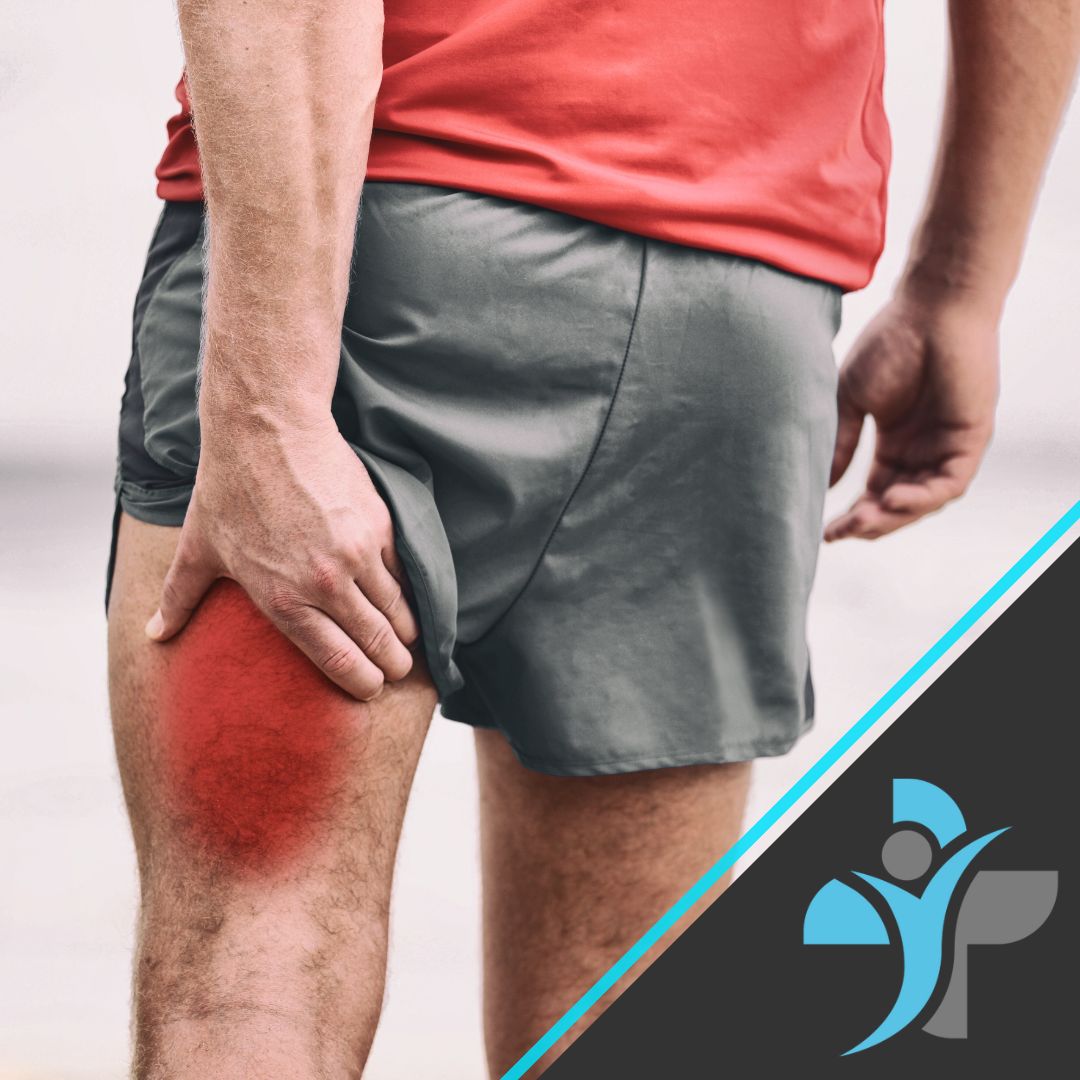
Hamstring rupture
Overview
Hamstring rupture is a relatively uncommon injury that occurs when one or more of the muscles located in the back of the thigh are torn. These muscles, known as the semitendinosus, semimembranosus, and biceps femoris, play a crucial role in the movement of the knee and hip.
The incidence of hamstring rupture is estimated to be between 6-16 cases per 100,000 person-years. It is more common in athletes, particularly those who participate in sports that involve sprinting and jumping. Men are more likely to experience a hamstring rupture than women. People with previous hamstring injuries or those with a muscle imbalance, such as tightness or weakness in the hamstring muscles, are also at an increased risk.
The severity of a hamstring rupture can vary, with some cases being mild and others being more severe. In mild cases, the individual may experience only minor pain and muscle weakness. In more severe cases, however, the individual may experience significant pain and difficulty walking. The individual may also feel a popping sensation in the back of the thigh at the time of injury.
Anatomy
The hamstring muscles are a group of four muscles located in the back of the thigh, including the Biceps Femoris Long Head (BFLH), Biceps Femoris Short Head (BFSH), Semitendinosus (ST) and Semimembranosus (SM). All four muscles participate in knee flexion, with the BFLH, SM, and ST also assisting with hip extension, while the BFSH is not active in hip extension. The ST and BFLH share a common origin on the anteromedial ischial tuberosity, while the SM originates more proximally and posterolateral on the ischial tuberosity. This muscle group is important for movements that involve knee and hip extension, such as running, jumping, and climbing.
Symptoms
• Pain: A sharp pain or burning sensation in the back of the thigh, usually felt at the time of the injury.
• Muscle Weakness: The individual may feel a loss of strength in the affected leg, making it difficult to walk or stand.
• Swelling: The affected area may become swollen and tender to the touch.
• Stiffness: The individual may experience stiffness in the affected leg, making it difficult to move or bend the knee.
• Bruising: There may be visible bruising on the affected leg.
• In more severe cases, an individual may feel a popping or tearing sensation at the time of injury, indicating a complete or partial muscle tear.
• Inability to contract the muscle, if it’s completely ruptured, the individual will not be able to contract the muscle at the site of the injury.
It’s important to note that these symptoms may not be immediately apparent and may take several hours or even days to develop. It’s always a good idea to see a doctor for a proper diagnosis if you suspect a hamstring injury.
Causes
• Overuse or repetitive strain injuries
• Sudden, forceful movements
• Weakness or fatigue in the muscle
• Lack of flexibility
• Previous injury to the hamstring
• Age, as the risk increases as people get older
• Genetic predisposition
• Certain medical conditions such as hamstring tendinopathy
• Participation in high-demand sports (such as soccer, football, or track and field)
Diagnosis
Diagnosis of a hamstring rupture typically involves a physical examination, during which the individual’s range of motion and muscle strength will be evaluated. Imaging tests such as an MRI may also be used to confirm the diagnosis and determine the severity of the injury.
There are different stages of hamstring rupture, depending on the severity of the injury. The three main stages are:
Grade 1: a mild strain or tear of the muscle fibres, which typically results in only minor pain and muscle weakness.
Grade 2: a moderate strain or tear of the muscle fibres, which may result in significant pain and difficulty walking.
Grade 3: a complete tear of the muscle fibres, which may result in severe pain, difficulty walking, and an inability to use the affected le
Treatment
Treatment for a hamstring rupture typically includes rest, ice, compression, and elevation (RICE) in the early stages, along with physical therapy to regain strength and flexibility. Surgery may be recommended in more severe cases. Recovery time can vary depending on the severity of the injury, with mild cases typically taking 4-6 weeks to heal and more severe cases taking several months.
Exercises
Returning to strenuous exercise too soon after a hamstring rupture can cause further damage and delay healing time. On the other hand, avoiding exercise for too long can cause the muscle to weaken and become stiff. To avoid this, it’s important to start a rehabilitation program as soon as possible after the injury, under the guidance of a physical therapist or other medical professional.
In the initial phase of rehabilitation, the focus should be on restoring flexibility and range of motion to the affected muscle. Some effective exercises for this phase include:
• Hamstring Stretches: Gently stretch the hamstring muscle by sitting on the floor with one leg extended straight in front of you. Slowly lean forward, keeping your back straight, and reach forward to touch your toes or the top of your extended foot. Hold the stretch for 20-30 seconds and repeat on the other leg.
• Isometric Hamstring Contractions: Sit on the floor with your affected leg straight and a resistance band around the ankle. Slowly contract the hamstring muscle by pulling the ankle towards your glute, while keeping the leg straight. Hold the contraction for 5-10 seconds and repeat for 10-15 repetitions.
• Glute Bridges: Lie on your back with your knees bent and feet flat on the floor. Slowly lift your hips up towards the ceiling, squeezing your glutes and hamstrings as you lift. Hold the contraction for a moment at the top, then slowly lower back down. Repeat for 10-15 repetitions.
• Gentle cycling: Gently cycling is a good way to start working on your hamstring again. It’s a low-impact exercise that can help to improve the range of motion in your knee and ankle joints, and it will help to get the blood flowing to your hamstring.
It is important to start these exercises gradually, and only when the pain has started to subside, and to avoid activities or exercises that cause pain or discomfort in the affected area while you are healing.
If you have suffered or are suffering from this injury, you can get in touch with one of our massage therapists or exercise professionals via email info@livewellhealth.co.uk or give us a call on 0330 043 2501.



